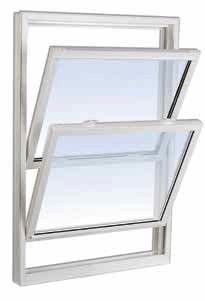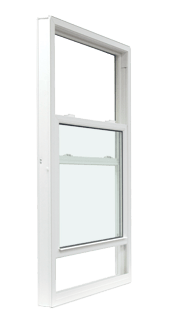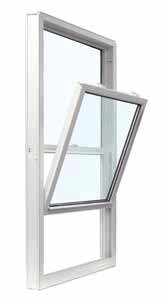Different windows are ideal for different places in your home. An obvious and somewhat redundant statement.
Yet this is something a lot of people don’t consider, even as they are shopping for replacement windows.
Sometimes it’s easy to get carried away with how you want the windows to look in a certain room, instead of why they should or shouldn’t be there.
In previous posts, we examined how specific windows in different rooms can maximize energy efficiency. We also looked at the pros and cons of casement, awning, and slider windows. In continuing with the theme, today we’ll examine what features hung windows offer, and what to look out for if you’re considering them for your custom replacement.
It is important to note, that for most companies, slider and hung windows are manufactured in the same way, and have all the same features. Essentially a hung window is a slider turned ninety degrees. So most points of concern are similar for both of these windows.
Slider and hung windows are not as efficient as casements and awnings. Usually, they use weatherstripping instead of a compression seal to fill the space between frame and sash. This results in significantly lesser performing units. Weatherstripping also wears down faster than compression seals, leaving these windows more prone to air leaks and drafts.
Just like in sliders, the sashes in hung windows can be turned inward for cleaning and maintenance. This is the biggest area of concern with hung windows. As a homeowner, you have to exercise a lot of care and caution in tilting these sashes in, especially in bigger size windows. As the sashes are opened inward they can’t just be left to hang. The weight of the unit may pull the sash out of the frame, causing it to drop. Besides the sealed unit, this can leave you with a few broken toes.
When the sashes are turned back into the frame, it is important that they are clicked in all the way. Sometimes, homeowners don’t ensure the window is latched, only for it to fall down and out after they walk away.
The weight of the sashes also plays an important role in how the unit stays up in the track it moves on. With a lesser quality product, the mechanism weakens over time, and the moving part may not stay in place after a while.
There are still, however, some advantages hung windows have over casements. A big one is obviously the price. A hung window on average is at least a couple hundred dollars cheaper than the casement. This makes them a great choice for places where the aesthetic appearance is not as important, like kitchens and hallways. Another advantage is the size. Casement windows have a much smaller maximum size than hungs, so the latter may be a better solution for bigger windows in narrow spaces.
Regardless of which window you think may look right, consider which window would best fit the function of one room or another. Regardless of your budget, there is always a couple of options you can exercise in each space.



Pros
– Great option for a budget replacement
– Improved ventilation
Cons
– Not as energy efficient as casements or awnings
– Depending on the quality, the sash may fall out or not stay up properly.
Check out:
Modern Windows Compared: Awning And Casement Vs. Slider And Hung
Kitchen Window Ideas: Awning, Slider Or Hung?
Find Out The Cost of Replacement Windows

